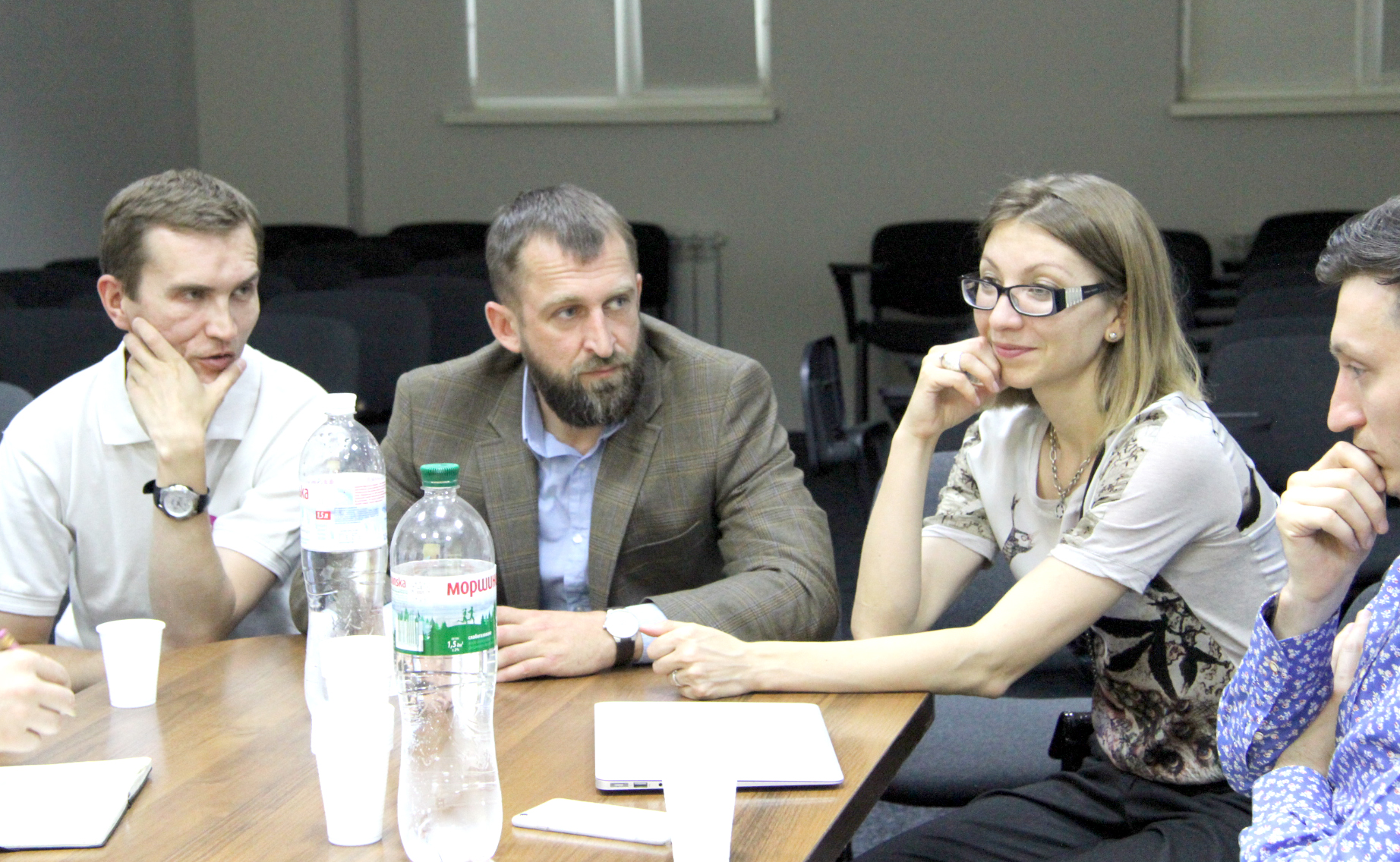
Update of the clinical protocol for the provision of medical care to patients with tuberculosis. Major changes
The development of a new clinical protocol of medical care for TB patients is continuing in Ukraine; it will take into account all current international and sufficient evidence-based recommendations, as well as present and future realities of our country. The protocol is based on the adapted clinical guideline “Tuberculosis,” the draft of which was published for public consideration on the website of the Ministry of Health of Ukraine (moz.gov.ua) on January 31, 2018. The development of the protocol is supervised by the Ministry of Health of Ukraine with the involvement of specialists of the Institute of Phthisiology and Pulmonology named after F.Yanovskyi of NAMS of Ukraine, the Centre for Public Health of the Ministry of Health of Ukraine, National Medical University named after O.Bohomolets, representatives of non-governmental organizations, particularly PATH, the All-Ukrainian Network of PLWH, and the Alliance for Public Health.
The need to update the protocol arose due to new approaches to the prevention, diagnosis and treatment of tuberculosis; the lack of an updated protocol on the TB treatment of children; the need for a unified approach to the treatment of patients with HIV/TB co-infection; and the specifics of the patients’ management in prison settings.
So let’s focus on the main changes in the treatment protocol.
Unification of protocols of medical care for pediatric and adult TB patients and patients with HIV/TB co-infection in one document
The TB treatment protocol will finally be introduced in Ukraine; this protocol has combined recommendations for both adults and children, as well as for patients with HIV/TB co-infection. That is, everything related to the management of TB patients will be presented in one document. This will avoid duplication of information in various documents and relevant errors, as well as make it easier for doctors to learn the new document. For example, there is currently a separate management protocol for patients with HIV/TB co-infection, and there are no specific guidelines on the management of children with TB at all.
TB screening
The new protocol will eliminate the outdated practice of using the fluorographic examination to screen the population for tuberculosis. Instead, there is a questionnaire of the population (separate ones for adults and children) recommended by WHO to identify the TB symptoms. This responsibility is assigned to the primary care (family doctors). And this, as we known, provides for the reform of health care within the package of free compulsory medical services of family doctors. At the same time, the conduct of X-ray examination and sputum research, using a bacterioscopic examination (possibly Gene Xpert MBT/RIF) for suspected tuberculosis patients and with existing pulmonary symptoms, will be carried out, as before, at the primary level of care.
The country abandons mass tuberculinodiagnosis for children. It will remain for exposed children and for the TB diagnosis in children suspected of having tuberculosis. At the same time, in addition to the traditional Mantoux test, the protocol provides for the use of a modern, more specific method, quantiferon test. It is well known that the quantiferon test is based on enhanced interferon production by patient’s sensibilized blood lymphocytes in a response to the administration of recombinant antigens (CFP and ESAT-6). These antigens are present only in mycobacterium tuberculosis, the main pathogens of tuberculosis. Therefore, the quantiferon test is more specific than the traditional Mantoux test which gives a positive result for children vaccinated with BCG.
Chemoprophylaxis of tuberculosis
The use of two modes of TB chemoprophylaxis for exposed persons with susceptible tuberculosis and TB risk groups is foreseen. One mode continues to require a daily intake of isoniazid for 6 months. Another one involves a 3-month mode of controlled dosing of isoniazid and rifapentine once a week. Chemoprophylaxis for persons exposed to drug-resistant tuberculosis is not envisaged due to the lack of sufficient evidence base of such prophylaxis effectiveness.
Diagnosis of tuberculosis
Changes in the approach to the TB diagnosis is related to the wider use of molecular genetics methods for diagnosis of tuberculosis, such as GeneXpert MTB/RIF and the line probe assay to detect the resistance to anti-tuberculosis drugs. GeneXpert MTB/RIF is planned to be expanded to primary health care, which will speed up detection of the TB and resistance to rifampicin among the population. The use of line probe assays is one of the main requirements of WHO to prescribe short-term, standardized treatment for patients with multi-resistant tuberculosis. For now, such diagnoses are only possible in the Mykolaiv, Kharkiv and Kyiv regions, where there are specially equipped laboratories and trained personnel. Therefore, it is planned to expand the network of such laboratories to cover the country’s need in line probe assays.
An updated algorithm for TB diagnosing in HIV-positive individuals
For the first time in Ukraine and Europe, diagnosis of TB using LF-LAM is foreseen for HIV-positive patients with severe immunosuppression (CD 4 below 100 cells/ml) or HIV-positive patients with a severe condition with symptoms of tuberculosis regardless of the CD 4 level. This assay can detect mycobacterium antigens in the patient’s urine in 25 minutes. The method is identical to the method of rapid tests for pregnancy or express diagnosis of HIV. Such an assay will increase the detection of TB in HIV/AIDS patients, whose TB diagnoses are complicated and often have characteristics due to the lack of bacterial secretion and extra-pulmonary localization of tuberculosis. The Network 100% Life will implement this technique starting from 2018.
Peculiarities of TB patients’ management
The joint management of TB patients is foreseen for family doctors and phthisiatricians. Family doctors discuss issues of the appointment of standard treatment regimens for patients with tuberculosis.
Four categories of TB treatment for patients are abolished. Instead, there are groups of patients with drug-susceptible TB and with drug-resistant TB. Verification of treatment results remains unchanged.
The groups of patients, who are linked to care and had TB, and exposed persons are abolished. Upon successful completion of a TB treatment course, the patient will not be subject to any restrictions on admission to work or the choice of profession.
Updated algorithms for TB screening and diagnostics were developed for patients in prisons according to the peculiarities which institutions of the criminal-executive service had.
Classification of TB drugs
The classification of TB drugs for the treatment of patients with drug-resistant TB was changed in accordance with WHO recommendations (2016). They have new TB drugs, such as linezolid, delamanid, and bedaquiline, as the main drugs of choice for the drug-resistant TB treatment.
Standardized treatment for patients with drug-resistant tuberculosis
Today, the WHO recommends using clofazimine as only one standardized treatment for patients with multidrug-resistant tuberculosis. And, what is important, it is a short-term treatment. In particular, the full course of treatment, according to this regimen, lasts from 9 to 11 months. And the intensive phase of treatment lasts from 4 to 6 months. For comparison, the duration of the intensive phase of the usual regimen treatment is 8 months and longer. The maintenance phase of the short treatment regimen lasts only 5 months, while the time of traditional one is a year.
In- and out-patient phases of TB treatment
In-patient treatment is no longer a priority but is considered as one of the possible options for TB patient management. The family doctor together with the phthisiatricians will organize treatment of patients according to their individual needs. Approach to the involvement of various providers, including non-governmental organizations, in the controlled treatment remains unchanged.


